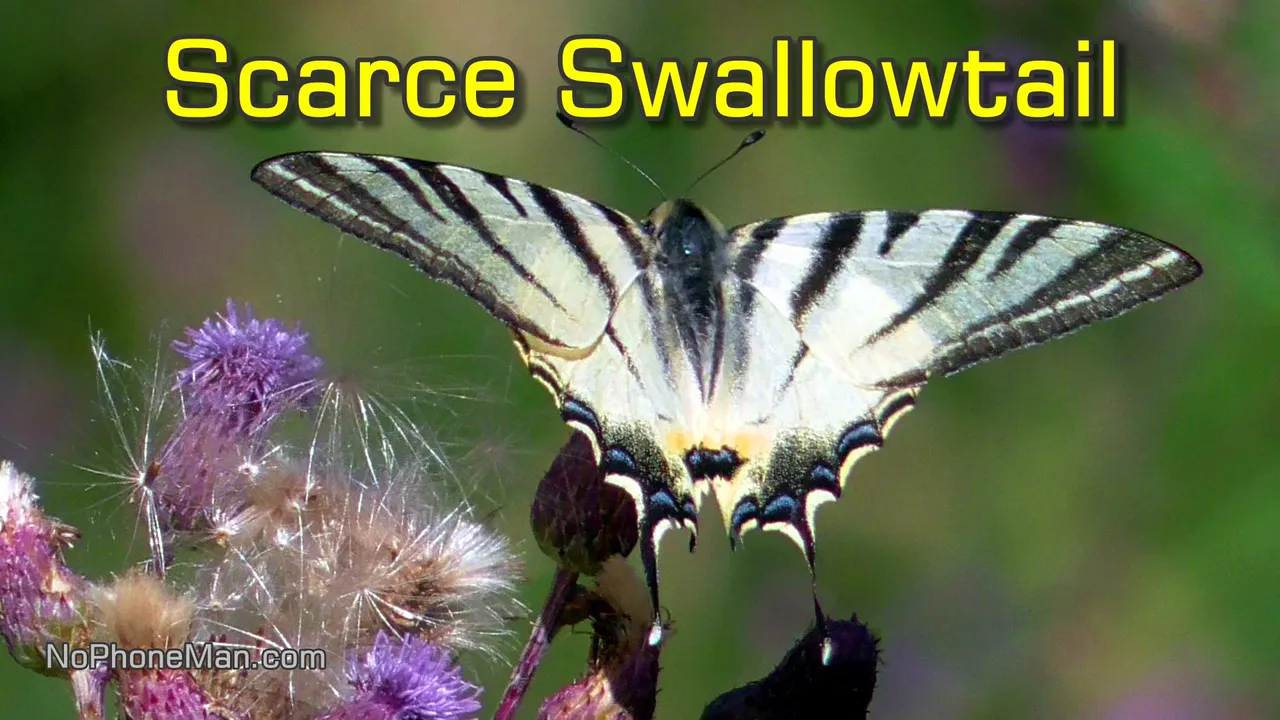It was quite windy the other day, but I went to do my daily rounds in the woods anyway. Like I always do regardless of weather. On my latest walk, my attention was attracted by a small ground of the Scarce Swallowtail butterflies.
The Scarce Swallowtails (Iphiclides Podalirius) are getting rarer and rarer, so I was happy to have come across some and tried to film them. However because of the wind, it was not easy at all. They kept feeding on and pollinating Field Thistle (Cirsium Arvense) exclusively.
But these tall plants really swayed hard with the wind, which made it a challenge to get a decent shot of the Swallowtails. Yet, in spite of the wind, the butterflies kept pollinating seemingly undisturbed.
Field Thistle are edible, but because like all Cirsium species they grow spines, they’re a bit of a pain to prepare for eating, so I usually don’t bother. But I am well aware of this wilderness survival food and remain ready to use it should a situation call for it.
The Scarce Swallowtails demonstrated that they are a rewarding butterfly to photograph because they land on the flowers they pollinate with their wings open. This way a photographer can capture them in all their beauty. That is in stark contrast to other pretty butterflies, like the Common Blue (Polyommatus Icarus), whose males are gorgeous blue on the inside, but their flight pattern is difficult to follow with a camera and when they land, they close their wings, hiding the magnificent upperside.
As is quite obvious, the Swallowtail get their name from their tail which is forked like the tail of the Swallows. I made a video about Barn Swallows before - take a look and compare the tails, hehe:
While filming the Swallowtails in the wind, the creaking sound of a widowmaker from within the woods could be heard all the way from the meadow. Because I talked about it while filming the Swallowtails, after I finished videotaping them, I went into the woods to show you the widowmaker I spoke about.
It’s an old Pine tree which was weakened by a wood rot and cracked at the root. As it was falling, it landed on a nearby Beech tree and has been leaning on it since. Because of its weight, when the Beech sways with the wind, the Pine’s trunk and branches rub against the Beech, causing the creaking sound that can be heard from far away.
My camera automatically compensates for sound spikes, so the creaking in the recording doesn’t sound as loud as in real life. The same creaking can be heard in the video about the Slugs, a Dor Beetle and a Fire Salamander who came out after the rain. Here’s the video:
Because in some parts of the video the wind was blowing directly into my camera’s microphone and I only have a cheap palmcam without wind-breakers, I put subtitles in the parts which may be more difficult to hear due to the wind blasting into the mic.
I hope the video was helpful and educational for you, but please bear in mind that I’m not an expert and may be wrong about anything I say. Always do your own research and if you need an expert advice, do consult an actual expert. Please review my disclaimers at https://www.nophoneman.com/wild-edibles-disclaimer/ and https://www.nophoneman.com/medical-disclaimer/.
00:00 NPM Disclaimer
00:11 Scarce Swallowtail with one wing-tail broken
00:39 Swallowtails like to pollinate Field Thistle
00:55 Widowmaker creaks with the wind
01:29 Very windy day
01:53 Field Thistle is an edible plant, good survival food
02:46 Swallowtails pollinate flowers with wings open
03:10 The Common Blue (Polyommatus Icarus)
04:25 Introducing the widowmaker
05:45 Wind resumes, creaking restarts
06:25 Beech tree bark scratched from rubbing with the widowmaker
07:29 Closeups of old pine widowmaker
09:30 Wood on wood creaking
Keep rocking :o)
Mark
https://www.nophoneman.com/
▶️ 3Speak


